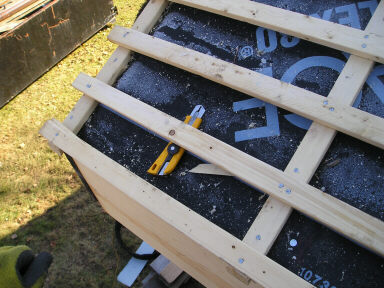
Over a heated space, over a solid roof deck:
- Install roofing underlay over the entire roof deck.
- Install 1x2 (nominal) spruce-pine-fir (SPF) strap <16" oc up the pitch of the roof.
- Install 1x2 SPF strap arcoss the pitch of the roof on centres equalto the planned exposure of the shingles.
This strapping grid over the roof deck and under the shingles will allow the shingles to breathe and dry out from behind. The strapping grid is not exposed to precipitation or snow melt when the roof is complete. The strapping is over hung from the edge of the facer. This overhang of the strap on the outward and downward edges of the roof plane will be the intake vents for the shingles.
There are a couple ways to hide the ends of this strapping grid that I have used in the past. If there is aluminum facia already installed, I have used a double run of aluminum shingle starter. The first over the roof deck and facia, as would be installed under steel or asphalt roofing. The second course is installed over the strapping grid. As the strap grid will be roughly 1 1/2" thick, be certain to select a starter that has its exposed face greater than this dimension.
Another method that can be used is to install a stepped out shadow facia in the event there is already a wood facia previously installed. If in the case of a new construction,the choice is yours. The key is to allow fora vent intake on all possible outward edges of all roof planes.